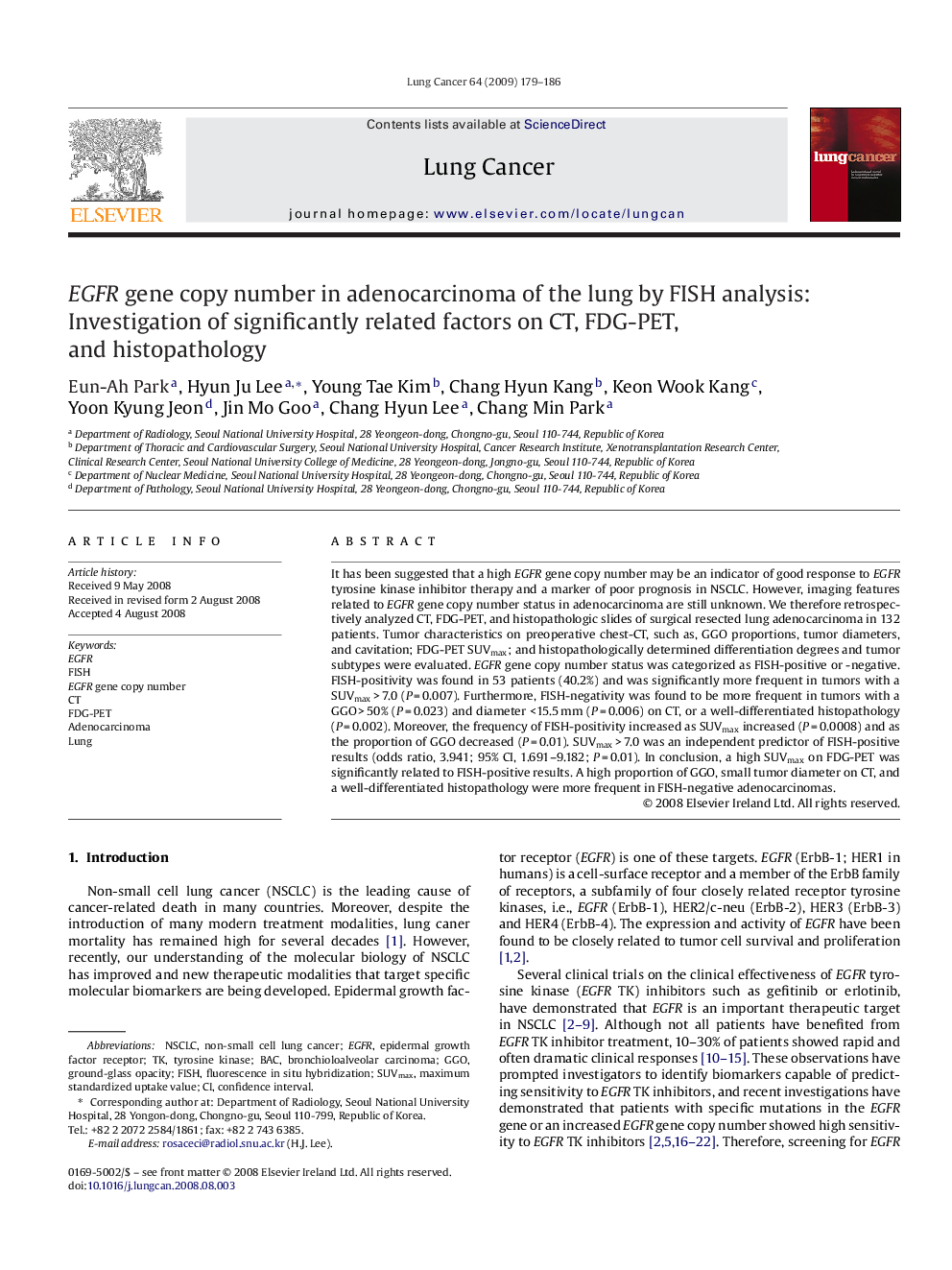| Article ID | Journal | Published Year | Pages | File Type |
|---|---|---|---|---|
| 2143137 | Lung Cancer | 2009 | 8 Pages |
It has been suggested that a high EGFR gene copy number may be an indicator of good response to EGFR tyrosine kinase inhibitor therapy and a marker of poor prognosis in NSCLC. However, imaging features related to EGFR gene copy number status in adenocarcinoma are still unknown. We therefore retrospectively analyzed CT, FDG-PET, and histopathologic slides of surgical resected lung adenocarcinoma in 132 patients. Tumor characteristics on preoperative chest-CT, such as, GGO proportions, tumor diameters, and cavitation; FDG-PET SUVmax; and histopathologically determined differentiation degrees and tumor subtypes were evaluated. EGFR gene copy number status was categorized as FISH-positive or -negative. FISH-positivity was found in 53 patients (40.2%) and was significantly more frequent in tumors with a SUVmax > 7.0 (P = 0.007). Furthermore, FISH-negativity was found to be more frequent in tumors with a GGO > 50% (P = 0.023) and diameter <15.5 mm (P = 0.006) on CT, or a well-differentiated histopathology (P = 0.002). Moreover, the frequency of FISH-positivity increased as SUVmax increased (P = 0.0008) and as the proportion of GGO decreased (P = 0.01). SUVmax > 7.0 was an independent predictor of FISH-positive results (odds ratio, 3.941; 95% CI, 1.691–9.182; P = 0.01). In conclusion, a high SUVmax on FDG-PET was significantly related to FISH-positive results. A high proportion of GGO, small tumor diameter on CT, and a well-differentiated histopathology were more frequent in FISH-negative adenocarcinomas.
